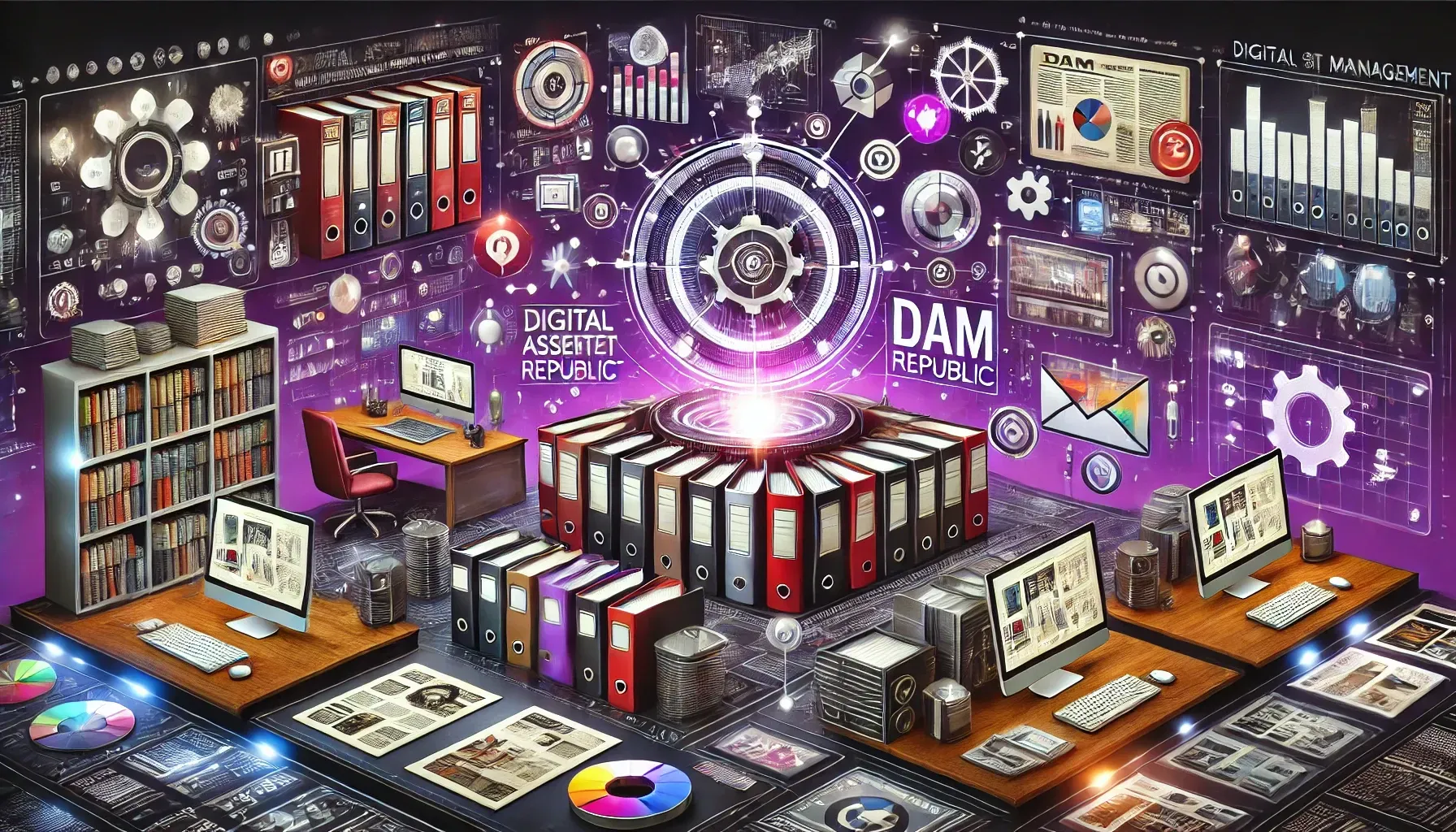The Basics of Digital Asset Management (DAM)
How DAM Transforms the Way Businesses Manage Content
Introduction
In today’s fast-paced, content-driven world, businesses are constantly generating, storing, and utilizing digital assets. From logos and marketing videos to presentation decks and product images, managing this growing pool of assets effectively can make or break a company’s ability to stay ahead of the competition. This is where Digital Asset Management (DAM) comes into play.
DAM systems help businesses organize, store, and retrieve digital assets efficiently. By centralizing assets in a structured way, companies can reduce time spent searching for content, improve collaboration across teams, and ensure that brand consistency is maintained across all touchpoints. In this article, we’ll explore the basics of DAM, its benefits, and why implementing a DAM solution is vital for organizations that rely heavily on digital content.
In This Article
Key Insights
1. What is Digital Asset Management (DAM)?
At its core, Digital Asset Management (DAM) refers to the process of organizing, storing, and retrieving digital files in a centralized location. These digital assets can range from photos, videos, and audio files to PDFs, presentations, and marketing collateral. A DAM system provides a structured environment where these assets are tagged with metadata, categorized, and stored in a way that makes them easy to search, access, and use.
A personal example: In a previous role, I worked at a company where we used a shared drive for all our content. It was chaotic—no one knew where to find the latest brand assets, and we often ended up using outdated materials in our campaigns. Implementing a DAM completely transformed our workflow. Suddenly, everything we needed was accessible with just a few clicks, saving hours of work each week.
2. Key Benefits of Using a DAM System
Time Savings and Increased Efficiency:
One of the biggest pain points for companies without a DAM is the sheer amount of time wasted searching for files. Studies have shown that employees can spend up to 20% of their workweek just looking for documents and assets. DAM systems eliminate this inefficiency by making assets easily searchable through metadata and keywords.
Example:
A global retail company was struggling to locate product images for seasonal campaigns. After implementing a DAM, they were able to tag all images with relevant metadata (e.g., season, product line, region), drastically reducing the time marketing teams spent searching for the correct assets. What used to take hours to locate was now accessible in seconds.
Improved Collaboration:
For companies with distributed teams or those that frequently work with external partners, having a DAM system ensures that everyone has access to the same up-to-date assets. It fosters better collaboration, as teams can share, comment, and approve files in real-time.
Example:
A marketing agency working with freelancers and clients across different time zones used a shared drive that often led to version control issues. After adopting a DAM, the agency and its external partners could all access the latest approved assets, provide feedback, and track changes in real-time, improving the speed and accuracy of project delivery.
Brand Consistency and Compliance:
Maintaining brand consistency is crucial, especially for businesses with multiple channels of communication. A DAM system allows marketing teams to ensure that the latest approved assets are always used, reducing the risk of outdated materials being circulated. Moreover, for industries with strict compliance standards, DAM systems help ensure that only approved and compliant materials are used.
Example:
A pharmaceutical company needed to ensure that its marketing materials were compliant with strict industry regulations. By using a DAM system with version control and user permissions, they were able to keep a strict handle on which assets were approved for use, ensuring that only compliant materials were distributed across all markets.
Cost Savings:
While investing in a DAM system may seem like an upfront cost, the long-term savings are significant. By reducing the time spent searching for assets, eliminating the need to recreate lost files, and improving overall efficiency, businesses can see a measurable ROI.
Example:
A mid-sized fashion brand had a habit of recreating marketing materials from scratch because designers couldn’t locate existing assets. After implementing a DAM system, they reduced duplication efforts, cutting their design team’s workload by 30% and saving thousands of dollars in outsourced design costs.
Enhanced Security:
A DAM system offers centralized control over digital assets, ensuring that only authorized individuals have access to sensitive or confidential content. With version control, audit trails, and user permissions, businesses can protect their valuable assets from unauthorized use or accidental deletion.
Example:
A financial services firm needed to secure its internal presentations and sensitive reports. After deploying a DAM system, they were able to limit access to confidential documents and track who had viewed or downloaded them, ensuring that sensitive information remained secure within the company.
Common Mistakes to Avoid
- Failing to Tag Assets Properly – One of the most common mistakes when using a DAM is neglecting metadata and tags. Without proper tagging, even the best DAM system won’t be as effective.
- Overcomplicating the System – It’s easy to get carried away with categorization. Overcomplicating the folder structure or applying too many tags can make the system harder to navigate.
- Not Training Users – Even the most sophisticated DAM system won’t deliver results if users aren’t properly trained on how to use it.
Conclusion
Digital Asset Management is no longer a “nice-to-have” for businesses; it’s a necessity in today’s digital-first world. With the sheer volume of digital content companies produce, having a DAM system is crucial for staying organized, efficient, and competitive. By centralizing assets and making them easy to access, businesses can reduce wasted time, improve collaboration, and ensure that brand consistency is maintained.
For companies that want to stay ahead, implementing a DAM system is the first step towards streamlining content operations. Ready to explore how DAM can revolutionize your business? Start today by assessing your current content workflows and see how a DAM solution can make a difference.


